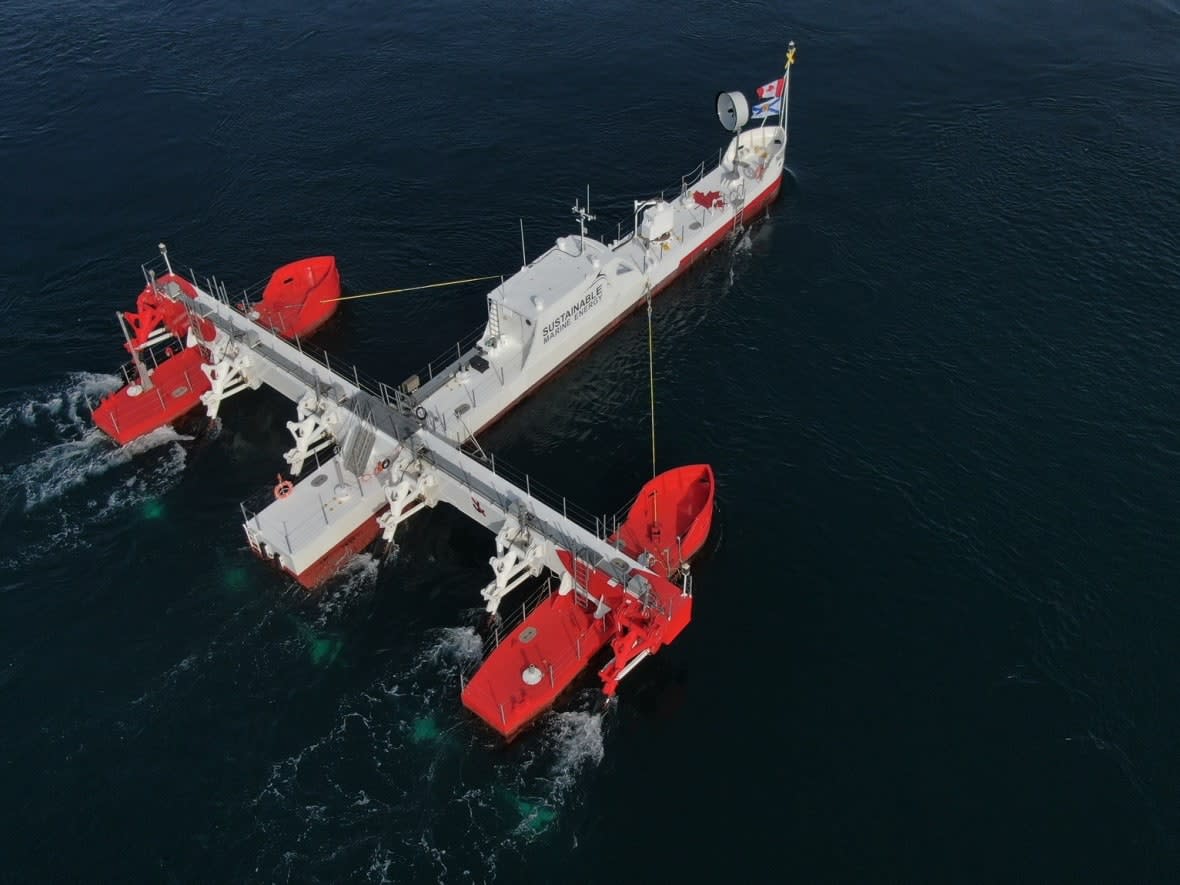Tidal power developer slams DFO for years of delays, stops application for N.S. project

The decades-long saga to harness the highest tides in the world to create renewable energy seems to have hit another snag. But the problem is not the powerful currents, it's red tape.
The CEO of Sustainable Marine Energy, a company based in Scotland with an office in Dartmouth, says his company is stepping back from its application for a site with the non-profit Fundy Ocean Research Centre for Energy (FORCE) near Parrsboro, N.S.
"We have notified [the Department of Fisheries and Oceans] that we are withdrawing, what is now our third application, for an authorization," said Jason Hayman. "We have been working for about three years to get an authorization from DFO to deliver our project, but we are basically coming up against a brick wall."
Hayman says Sustainable Marine has been in discussions with DFO for five years.
Expansion plans halted
The company's technology is based on floating turbines and one unit is already in operation, supplying power to the electrical grid in Digby County near Brier Island.
Hayman says they only have permission to operate it during daylight hours.
Their plan to expand to the FORCE site is scuttled for the moment.
"Right now we are trying to work with our project partners and stakeholders and look at our options," said Hayman. "We would like to remain in Nova Scotia if we can find projects to deliver, but that's proving to be quite difficult at the moment."
In an emailed statement received more than a day after CBC's initial request for comment, a DFO spokesperson said Sustainable Marine had not provided enough information about its project.
"To advance the application for authorizations under the Fisheries Act and the Species at Risk Act for this project, an adequate monitoring plan is needed to evaluate impacts to fish and fish habitat in the higher flow environment in which the project is proposed," wrote Jeff Woodland.
"To date, adequate information has not been received from the proponent."
Woodland noted that several authorizations had been granted to tidal energy projects in the Bay of Fundy, including four for Sustainable Marine.
Blow to tidal power industry
Hayman says his company has sunk about $30 million into their work to use tidal power to generate electricity from the Bay of Fundy and have have also been granted millions of dollars in federal government funding.
Sustainable Marine's decision is a blow to the tidal power industry, said FORCE executive director Lindsay Bennett.
"We are very aware of the need to build a clear regulatory path for marine renewables," said Bennett.
"Every project has unique challenges, but right now Canada is missing a clear regulatory process. If we're going to fight climate change with marine renewables, we need one."

Both the federal and Nova Scotia governments have aggressive targets for adding renewable energy sources to the power grid.
"I think if the industry is going to succeed in Canada and really have an impact on climate change and helping government meet their goals then a solution to those challenges is needed," said Elisa Obermann, executive director of Marine Renewables Canada, the national association for marine renewables which includes tidal power, offshore wind and wave and river energy.
"We need to find a way to find that clear path for the industry."
But that clear path may be too late for Sustainable Marine Energy which is now in limbo regarding their projects in Nova Scotia.
"We find it quite remarkable in terms of DFO's lack of alignment with other government stakeholders, whether they are provincial or federal," said Hayman, who was reached by phone in the U.K.
"DFO just doesn't seem to have the ability to look at the big picture."
Turbines mounted on the ocean floor have been tested at the FORCE site but none have survived. The first was destroyed by strong currents within three weeks of deployment in 2009.
The second turbine from Cape Sharp Tidal is still sitting on the ocean floor after it was abandoned when its parent company, OpenHydro Group Ltd., went bankrupt.
MORE TOP STORIES


